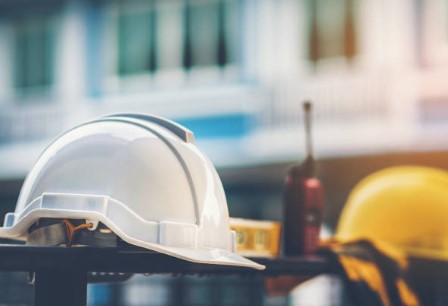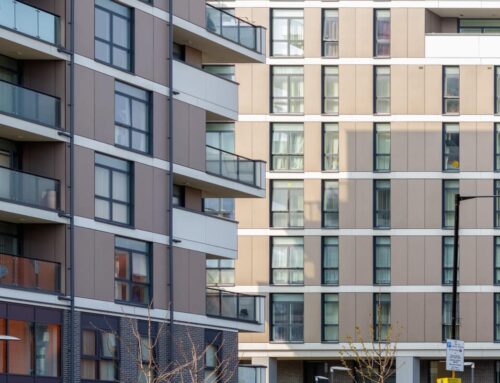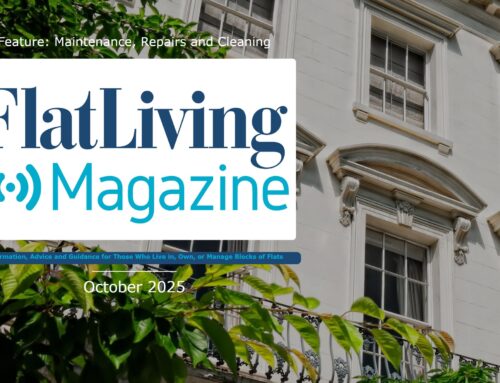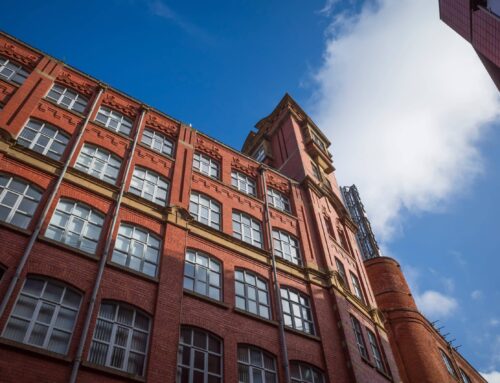Belinda Bagnall, the Managing Director of Residentsline, provides insights into ensuring the health and safety of your residents.
 The role of Property Manager or Residents’ Management Company (RMC) Director is a varied one, but at the top of a long list of responsibilities you’ll find ‘health and safety compliance’.
The role of Property Manager or Residents’ Management Company (RMC) Director is a varied one, but at the top of a long list of responsibilities you’ll find ‘health and safety compliance’.
The safety of your residents and their investment is in your hands.
As the responsible person for the block, your actions (or lack thereof) will be scrutinised in the event of an accident, fire or injury. If you can’t provide evidence that you’ve complied with the requirements of the law and health and safety regulations, you may well find yourself in legal hot water.
Property Managers and RMC Directors can also find themselves working with deeply unhappy residents if health and safety isn’t upheld as a priority. You may also encounter issues with insuring your block appropriately if you can’t show that assessments, suggested fixes and preventative measures are being adhered to correctly.
The Legal Responsibilities
Property Managers or RMC Directors are legally responsible for the health and safety of the building. RMC Directors are even more at risk when it comes to legal claims as they can be held personally responsible, with their own assets on the line (you can find out about our Directors and Officers Liability Insurance here).
The legal responsibility is to comply with Health & Safety law of course, but also to ensure that anyone working at the block adheres to the rules too. This includes their actions and their resulting work, whether they be employed full time, part time or on an ad hoc basis.
You’re effectively responsible for the health and safety of your residents, any workers on the property and any visitors to the property. Vigilance is needed in terms of noticing and responding to issues quickly, keeping on top of legislation changes and ensuring accurate record keeping.
Lifts
As a Property Manager or RMC you are an ‘owner or operator’ and are legally required to have your lifts inspected by a competent person once every 6 months (see the Health & Safety Executive website for more information). Any maintenance works suggested by your competent person are the key to warding off any catastrophic breakdowns and therefore any unexpected costs.
This is also paramount in terms of your insurance. Your buildings insurance policy will insure your lift in the event of damage caused through ‘insured perils’ such as fire, accidental damage or malicious damage, but this cover does not extend to general breakdowns or maintenance works.
You are also required under the Lifting Operations and Lifting Equipment Regulations 1998 (LOLER) to have your lift “thoroughly examined by a ‘Competent Person’ who will assess the safe operation of your lift”. These inspections are often referred to as Insurance Inspections and also need to occur every 6 months (as well as prior to new equipment going into service and after any major alterations).
A “thorough examination” is defined as a “systematic and detailed inspection of the lift and all its associated equipment”. The aim of the inspection is to identify any current defects as well as anything that may become dangerous in the future. The competent person must then report these issues to the owner/operator/duty holder for them to rectify. They must also report certain issues or circumstances to the relevant enforcing authority such as the Health and Safety Executive or the Local Authority.
Slips, Trips and Hazards
It’s important to remember that proper maintenance and achieving health and safety standards often go hand-in-hand. Most health and safety-related accidents involve a slip or trip and can have surprisingly serious consequences.
While RMCs cannot be held liable for clumsiness, they must ensure that they are doing everything they can to maintain their properties to help avoid simple trips. This means ensuring that common spaces are clear of any debris or tripping hazards as well as any spillages.
Tripping hazards could be defined as anything from rickety stairs or a misplaced box to broken handrails and insecure carpets. Outside the premises, debris must be removed from footpaths and trees must be maintained to avoid injury (especially following severe weather).
Poor lighting can also contribute to falls, slips or trips. Sufficient lighting should be a priority to allow residents or visitors to safely navigate their way around the premises.
Fire Safety
Since 1st October 2006, every party responsible for a block of flats is legally required to undertake a Fire Risk Assessment with regular reviews. This again applies only to common parts and not to the inside of individual units.
While assessments can be carried out by an ‘competent person’ and so are often contracted out to professionals, the buck ultimately stops with the RMC or Property Manager, so due diligence is advised before choosing a contractor to complete the task.
As a general rule and according to The Leasehold Advisory Service and The Local Government Association, assessments should be reviewed if:
- There is reason to believe the current assessment for the block is no longer valid.
- There have been any significant changes within the block such as major works.
Purpose-built blocks that are less than 20 years old and up to 3 storeys above ground level:
- Re-assessments should be carried out every 2 years if no significant changes have occurred.
- A full re-assessment should be carried out every 4 years if no significant changes have occurred.
For older buildings or with more than 3 storeys:
- Re-assessments should be carried out every year even if no significant changes have occurred.
- A full re-assessment should be carried out every 3 years even if no significant changes have occurred.
For buildings considered extremely high risk, a full re-assessment on an annual basis is advised.
Fire Officers are able to enter any block of flats to inspect the property and to view the risk assessment paperwork at any time. They can issue enforcement notices to improve fire safety should the need arise. Keeping a paper trail of assessments, reviews and any improvements made is vital.
Legionella
Legionella is a bacterium commonly found in water systems. Infection by the bacterium can result in Legionnaires’ disease, which can be fatal. Keeping the risks of Legionella at bay is crucial and every step should be taken to ensure contamination is avoided.
To ensure the necessary health and safety measures are upheld, a risk assessment should be carried out by an expert and reviewed annually. If any risks are identified, a written action plan should be produced and followed to reduce the risks.
Asbestos
According to the UK Asbestos Training Association, around 5000 people die from asbestos-related diseases every year.
Incidents involving asbestos-containing materials (ACM) and the exposures they cause are avoidable by simply ensuring that the asbestos is not disturbed.
If your building was built before the year 2000 then it should have an asbestos survey completed in order to comply with the Control of Asbestos Regulations 2012.
If asbestos is found, you are required to keep an Asbestos Register which lists the ACM while highlighting the risks posed and making recommendations to avoid disturbance. More often than not, the ACM can remain safely in situ if it can be undisturbed indefinitely.
Keeping Employees Safe
According to the Management of Health and Safety at Work Regulations 1999, risk assessments must be carried out to ensure that the property is safe for any contractors or workers to work in.
Some working from height is inevitable when it comes to high-rise blocks so, to ensure proper health and safety standards are maintained at all times, the RMC Director or Property Managers must ensure the following steps are taken:
- All work at height should be properly planned and organised.
- Those involved in work at height must be deemed competent.
- The risks from work at height should be assessed.
- Appropriate work equipment should be selected and used.
- Equipment for work at height is properly maintained and inspected.
- The risks from fragile surfaces must be properly controlled.
Head to the Residentsline website for information on all of our products and services or, if you’d like to speak to one of our fantastic, specialist team, give us a call on 0800 281 235.




Leave A Comment